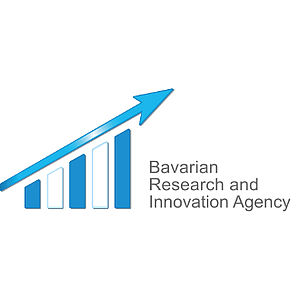
From 2022 on: "Gender Equality Plan" (GEP) as an eligibility criterion for Horizon Europe funding
![[Translate to Englisch:] [Translate to Englisch:] BayFOR Expertenwissen Gender Equality Plan](/fileadmin/user_upload/BayFOR-bilder/aktuelles/news/BayFOR-gender-c.jpg)
Horizon Europe makes gender equality even more of an overarching principle than Horizon 2020 and aims to address gender inequality and related socio-economic inequalities throughout the research and innovation system, including among other things the elimination of unconscious biases and systemic structural barriers.
The European Commission has taken the necessary steps to promote gender equality in the scientific world under the "Horizon Europe Strategic Plan 2021-2024".
To this end, the European Commission has defined the following objectives:
- Gender equality in scientific careers and in decision-making processes and bodies is now an eligibility criterion for Horizon Europe applications. Public institutions, research organisations and higher education institutions must have a "Gender Equality Plan" for calls with a deadline in 2022. The organisation is already asked whether it has a GEP in the online application. However, this is not mandatory at the time of application, but when the grant agreement is signed. Only for calls with a deadline in 2021 is the GEP not yet an admission criterion.
- A gender balance among researchers involved in projects is strongly encouraged.
- The integration of the gender dimension into research and innovation content (i. e. gender analysis) is now a standard requirement for Horizon Europe applications.
What exactly is a Gender Equality Plan?
The GEP has the following four requirements, which must also be publicly available on the organisation’s website:
- Public document: a formal document that the institution's management publishes on its website and also disseminates internally
- Dedicated resources: budget for gender equality staff units and a staff breakdown for gender equality work
- Data collection and monitoring: gender-disaggregated staff data, annual reporting on gender imbalances within the institution and a comprehensive evaluation approach
- Training and capacity building: Tackling unconscious bias, staff training and working groups on gender equality issues
The scope and form of a gender equality plan can vary greatly depending on the type of organisation, the institutional context in which it is implemented, the disciplines that are addressed or the nature of the inequalities that exist.
A gender equality plan can be divided into four different phases, each requiring specific types of actions:
- Analysis phase: The organisation collects data which have been broken down according to gender and critically assesses procedures, processes and practices to detect gender inequalities and distortions;
- Planning phase: The organisation defines objectives, makes plans and adopts actions and measures to address the problems that have been identified. It also allocates resources / responsibilities and agrees on schedules;
- Implementation phase: The organisation carries out activities and provides stakeholder communication in order to gradually expand the network of participants;
- Monitoring phase: The organisation regularly tracks and evaluates the process and progress. The results of the monitoring activities then allow the organisation to adapt and improve the measures so that it can optimise its results.
A step by step guide for creating a gender equality plan can be found here and downloaded here as a PDF.
Examples of a successful equality plan of selected institutions can be found here:
- Autonomous University of Barcelona
- National University of Ireland Maynooth
- Stockholm University – Department of Political Science
- University of Helsinki
- University of Vigo
- Uppsala University
- Swiss Federal Institute of Technology Zurich
Further measures to promote gender equality
Under the Horizon Europe programme part "Widening participation and strengthening the European Research Area", the EU provides specific funding for measures to support the development of gender equality plans in institutions of research and innovation in Member States and associated countries.
Initiatives and activities to promote equality are also organised within the framework of The European Innovation Council (EIC):
- An initiative to support start-ups under female leadership
- A prize for female innovators
- A gender balance should be achieved in evaluation and advisory bodies such as executive boards and expert groups. The aim is for 50% of the members of advisory structures to be women.
The goal is that 50 per cent of the members of advisory structures should be women.
Online course on Gender Equality Plans
The Gender Equality Academy is offering a free online course on Gender Equality Plans from the beginning of September. You can register for the English-language course "Gender Equality plans in practice: Towards sound and sustainable institutional change processes in research organisations" until the end of October. The course is divided into seven units.




